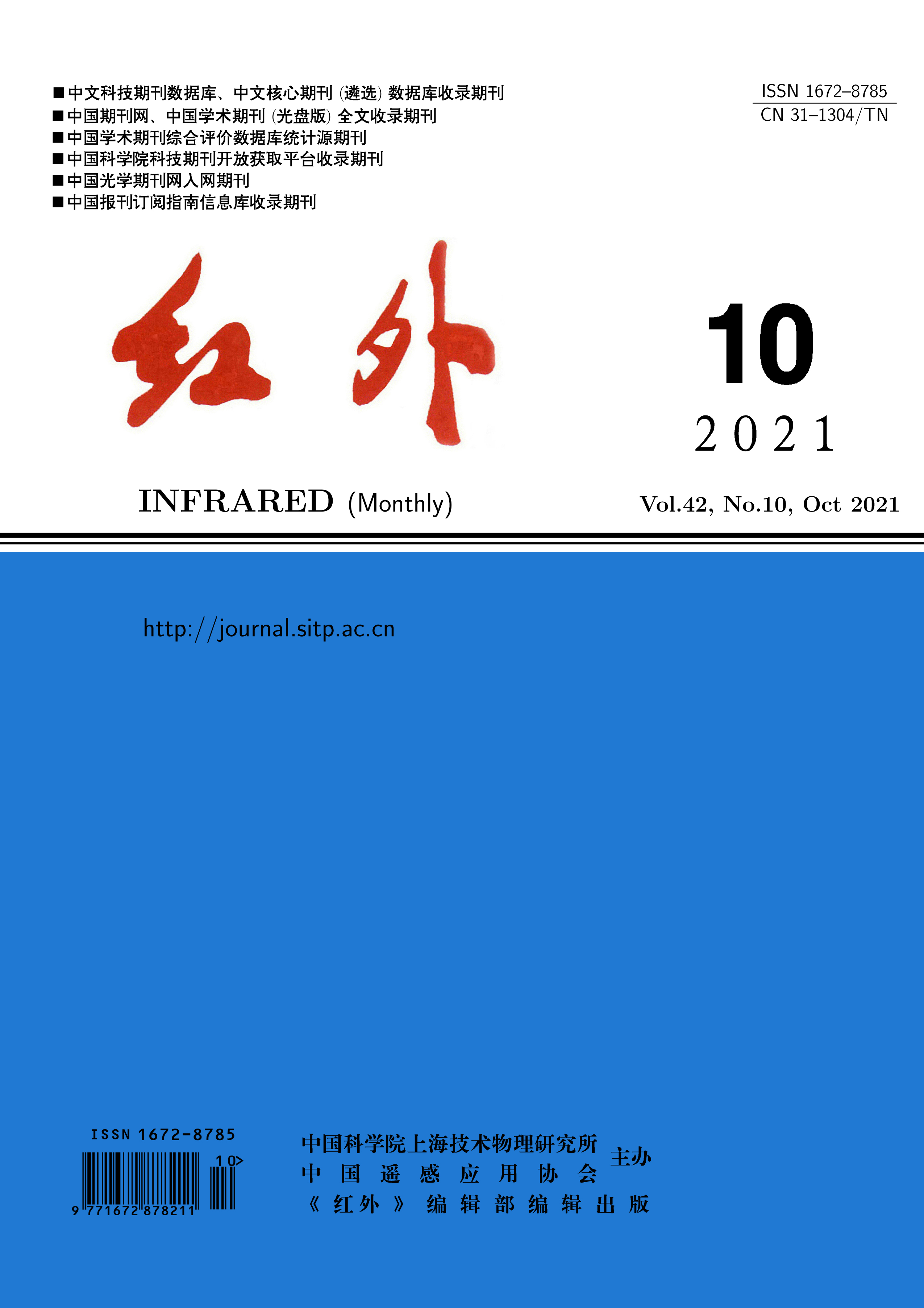
With the increasing application of large-scale infrared focal plane array detectors, users have put forward higher and higher requirements for the effective pixel rate index. The difficulty of improving the effective pixel rate is analyzed. By optimizing the processes such as substrate growth based on the vertical Bridgman method, and surface processing, the quality of liquid-phase epitaxy materials has been improved, and low-defect medium-wave HgCdTe thin-film epitaxy materials have been obtained. Through the development of back-side flattening process of HgCdTe detectors and optimization of flip-chip interconnection process for detector and readout circuit, the finished product rate is improved. Finally, the effective pixel rate index (greater than 998%) is improved, and good results are obtained.
The indium antimonide (InSb)electrode is prone to sidewall fracture due to its three-dimensional characteristics. Interconnected indium bumps will invade the inside of the electrode, affecting the reliability of the InSb chip. Three-dimensional electrode systems were prepared by ion beam sputtering deposition, thermal evaporation and magnetron sputtering. It was characterized by the focused ion beam (FIB) method and scanning electron microscope (SEM). The results show that the electrodes prepared by thermal evaporation and magnetron sputtering have good three-dimensional coverage, but there are problems with electrodes falling off and difficulty in peeling off. The ion beam sputtering deposition method can achieve high-quality preparation of three-dimensional InSb electrodes by changing the deposition angle and removing the correction baffle.
Academy of Sciences, Changchun 130033, China)As one of the popular directions in the field of computer vision, moving target detection has high theoretical research value and wide practical application space. Traditional visual background extractor (ViBe) target detection algorithm has high real-time performance and low memory consumption. However, this algorithm has many problems, such as obvious illumination change, inability to effectively suppress ghost area, inability to eliminate shadows, and inability to detect holes in the image. In view of the above deficiencies, three targeted improvement strategies are proposed: (1) Optimize the core parameters of the algorithm. Filter the optimal value to replace the previous experience value, so as to improve the performance and adaptability of the algorithm. (2) Introduce the light intensity detection operator. The image brightness is numerical and the threshold radius is adaptive to avoid ghost area due to light changes. (3) Add shadow detection model. The pixel distribution in the region of interest (ROI) determines the shadow position, and the target area and shadow area are separated according to the characteristics of the moving target. Simulation results show that the improved ViBe algorithm can not only detect and capture moving targets completely, but also effectively suppress ghost areas and eliminate target shadows.
Changchun Institute of Optics, Fine Mechanics and Physics, Chinese Academy of Sciences, Changchun 130033, China)Star sensor is one of the important components of autonomous navigation attitude control system. As the core component of star sensor, information processing system has important influence on the performance of star sensor. A nationally produced information processing system for multi-field-of-view star sensor based on the architecture of Feiteng multi-core DSP and Fudan micro FPGA is designed in this paper. In the design, EMIF and GPIO interface are used to interact and control data with Fudan micro FPGA. Two serial Flash chips are used to store star database data and start programs, and two DDR3 chips are used to cache data. The whole software process design, algorithm process design and implementation of the information processing system are introduced in detail in this paper. After experimental verification,the system can operate stably and output the correct attitude. When the star map resolution is 2048×2048, the system has an update frequency of 20Hz for data without initial pointing, while the update frequency is 625Hz with initial pointing. The computing performance is about 3 times that of the ordinary ARM architecture, which is of great significance for improving the real-time performance of the multi-field-of-view star sensor and enriching its engineering implementation method.
Academy of Sciences, Changchun 130033, China )In order to solve the problems such as tedious parameter debugging, difficult equipment installation and poor target applicability in the tracking performance test system of traditional photoelectric tracking equipment, an infield trajectory realization technology based on path planning of mechanical arm is studied. A more flexible and efficient tracking performance testing system is designed by planning the trajectory of the end of the six-degree-of-freedom mechanical arm. Firstly, the traditional test target system is analyzed, and the mathematical model of tracking performance test is defined. Then, a new technology scheme based on the six-degree-of-freedom mechanical arm is proposed, and the differences between the two schemes are analyzed. Through the coordinate transformation of the target trajectory, the terminal pose parameters suitable for the six-degree-of-freedom mechanical arm are obtained according to the traditional dynamic target trajectory, so as to realize the trajectory planning. Finally, the consistency between the proposed method and the traditional method is verified by numerical simulation. Simulation results show that the proposed method has the same tracking performance as the traditional method. Compared with traditional methods, the test system based on mechanical arm has more advantages in parameter adjustment, tool installation and target applicability, which can fully meet the requirements of photoelectric tracking equipment in the field tracking performance test.
In order to meet the requirements of laser power measurement in the fields of beam synthesis, laser countermeasure and laser damage measurement of materials, a hundred-Watt-level thermopile laser power measurement instrument based on the Seebeck effect is developed. This instrument can work normally without bias voltage circuit, and can realize the continuous laser radiation power measurement with wide range and high stability. The power of the laser with the wavelength of 1064 nm is tested. In the power range of 15--250 W, the error between the test results of the thermo reactor laser power meter developed in this paper and that of the standard laser power meter is within the range of ±3%.








